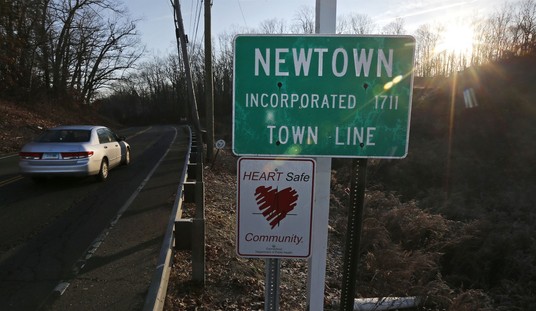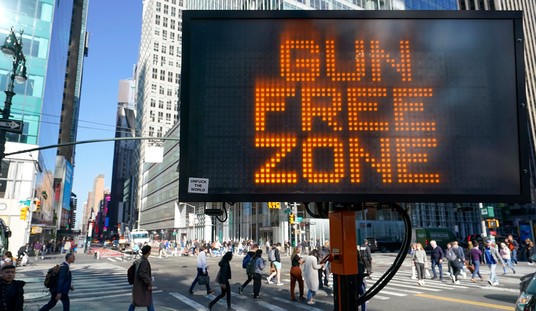If there’s one good thing about The Trace, it’s that they don’t hide their anti-gun bias. In fact, the site exists primarily to disseminate anti-gun news and opinion stories. They’re open about it.
While I disagree with them on almost everything they’ve ever said about anything, I can at least respect that they’re open and honest about their biases.
Yet that doesn’t mean they get to make up their own facts. It also doesn’t excuse them from using bogus studies to push their anti-gun agenda.
Firearm sales also surged after the September 11 terrorist attacks and in response to the 2012 shooting at Sandy Hook Elementary School in Newtown, Connecticut. Yet research clearly shows that more guns do not keep people safer — they do the opposite. Having a gun in the home increases the chance for accidental injury, homicide, and suicide, all of which have been shown to outweigh the potential protective benefits of firearms.
Now, I’ll grant that having a gun in the house increases the chance of accidental injury from a firearm. If you don’t have a gun, you’re less likely to shoot yourself. That’s just common sense.
However, the claim that it increases the chance for murders–which are different than homicides, but are what’s implied here–and suicides are nonsense. People kill themselves with tons of other things every day. Further, suicide is a mental health issue, not a gun issue.
Moving on, though:
A firearm might not actually help you stand watch over your family
It’s natural to worry about safety during a national emergency and to want to do everything possible to protect ourselves and our family members. The problem is that our perception of risk is typically skewed: We exaggerate certain kinds of risk and minimize others. Many Americans think that having a gun in the house will protect them, if, say, someone breaks in to attack or steal from them — yet violent break-ins are actually quite rare and have become steadily less common over the past 20 years. And when one occurs, having a gun is no safety guarantee.
This last part is accurate. Violent break-ins and other such violent crimes have all been becoming less common over the past couple of decades…and even further back. It should be noted, though, that this falls during a period of increased gun rights and gun sales. In other words, more people are buying guns and are able to carry them more places at the same time corresponds with a drop in violent crime.
Now, correlation doesn’t equal causation, but if the fearmongering among folks like The Trace was true, you’d expect to see the opposite trend. You don’t.
At the very least, we know that an increase in gun ownership and the carrying of firearms doesn’t result in more crime.
Indeed, although the NRA and others argue that “good guys with guns” save lives, these kinds of incidents are the exception rather than the rule. This misperception stems largely from a study published in 1995 by criminologists Gary Kleck and Marc Gertz, who asked 5,000 Americans if they, or other household members, had ever used their guns in the past year for self-defense. Based on the responses they received, the criminologists estimated that guns are used for self defense in the United States more than 2.5 million times a year. But other researchers argue that the survey was ambiguous and likely over-estimated defensive gun use; more recent studies have found that guns are only rarely used for self-defense. In 2015, David Hemenway, director of the Harvard Injury Control Research Center, and Sara Solnick, an economist at the University of Vermont, analyzed national government surveys involving more than 14,000 people and reported that guns are used for self-protection in less than 1 percent of all crimes that take place in the presence of a victim. They also found that people were more likely to be injured after threatening attackers with guns than they were if they had called the police or run away.
The claims that Kleck and Gertz overestimated gun use have been around for a while, sure. However, unlike many other studies, their numbers have been reproduced. In fact, their claims are identical to a study conducted by the CDC around the same time but sat on for years.
Now, as for Hemenway and Solnick’s study, I have no doubts that’s what they found. The problem, however, was their methodology only looked at crimes where there was a police response. A lot of time, people fear being treated like a criminal themselves, so if no shots are fired, they don’t report it to law enforcement. As a result, there are tons of cases where a gun was used defensively and it wouldn’t show up in their study.
The researchers simply never bothered to look any deeper.
In a landmark study published in the New England Journal of Medicine in 1993, researchers found that having a gun in the home was linked with nearly three times higher odds that someone would be killed at home by a family member or intimate acquaintance. Studies using more recent data have come to the same conclusion. In a 2019 study, researchers found that states with high levels of household gun ownership have more domestic gun homicides than other states do. In fact, the quartile of states with the highest rates of gun ownership have 65 percent more domestic gun homicides than the quartile with the least, which is worrisome considering that domestic violence has worsened during the coronavirus outbreak.
Now, let’s talk a bit about that “landmark study” from 1993.
You see, that particular study has been debunked so many times it’s outright hilarious to even mention it at this point. After all, it turns out that many of those being referred to were criminals. From the study (link in quote):
During the study period, 1860 homicides occurred in the three counties, 444 of them (23.9 percent) in the home of the victim. After excluding 24 cases for various reasons, we interviewed proxy respondents for 93 percent of the victims. Controls were identified for 99 percent of these, yielding 388 matched pairs. As compared with the controls, the victims more often lived alone or rented their residence. Also, case households more commonly contained an illicit-drug user, a person with prior arrests, or someone who had been hit or hurt in a fight in the home. After controlling for these characteristics, we found that keeping a gun in the home was strongly and independently associated with an increased risk of homicide (adjusted odds ratio, 2.7; 95 percent confidence interval, 1.6 to 4.4). Virtually all of this risk involved homicide by a family member or intimate acquaintance.
Illicit drug users or people with prior arrests suggests these were no lawful gun owners but, instead, criminals who died as a result of their criminal activity. The other group, those who were with domestic abusers, also represent a group not legally allowed to own a firearm. Assuming, of course, they’d been convicted of such an act.
As for the study finding a correlation between domestic homicides and gun ownership, that study failed to look at any other potential contributing factors.
In other words, every study they’ve provided so far is questionable at best. Some are outright bull. Yet all are being used to push the idea that the influx of guns leading up to COVID-19 represents some grave push.
I respect that they’re honest about their biases, but that doesn’t mean they get to use flawed studies without criticism, either.








Join the conversation as a VIP Member